
In this age when photo software can duplicate almost any effect film photographers used filters for, I still find one filter very useful. The Polarizing filter does just what polarizer sunglasses do, they cut down on the glare from the sun. Most people use a circular polarizing filter which means the filter moves once it is mounted on your lens in a circular motion. This gives you various amounts of polarization which you can see in your viewfinder.
In the photos below of the Dolphin resort in Disney’s Boardwalk area, I used a Nikon 50mm f/1.8 lens with a 52mm circular polarizing filter by Hoya. The top image is with the polarizer in it’s weakest position with no affect on the light. The bottom image is after I rotated the filter to it’s strongest position giving the very deep blue sky color. Notice the loss of light hitting the camera’s sensor. In this case, the shutter speed and aperture both decreased for a combined loss of 1 stop (see Exif data in the caption).
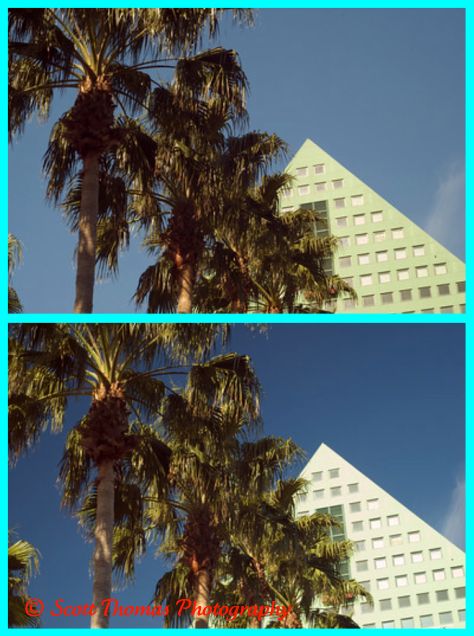
Polarizing Filter Effect.
Top Image: Nikon D70/50mm, 1/80s, f/11, ISO 200, EV +0.3
Bottom Image: Nikon D70/50mm, 1/60s, f/10, ISO 200, EV +0.3
I know what you are thinking. Even the most rudimentary photo program can deepen a blue sky. True, but I didn’t have to take the time. It takes a second or two to move the filter into the position I wanted. Besides, that’s not the only thing a polarizer filter can do.
Reflections can be greatly cut down and even eliminated using a polarizing filter. Check out the photos below where Spaceship Earth is reflected in one of the water pools near The Land pavilion in Epcot. The one on the left is with the polarizer filter at it’s weakest position. The one on the right is at it’s strongest position. In this case, only a half stop of light was lost thanks to a very bright Florida sun. You will notice how the reflection is diminished so you can see the rocks on the pool’s bottom. This works on reflections through glass, too.
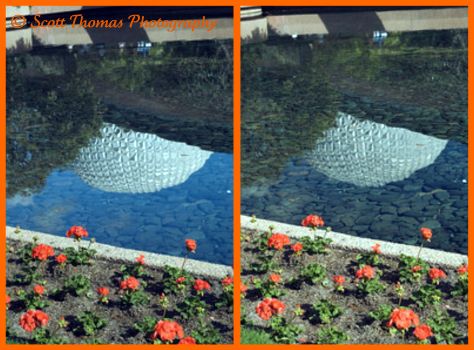
Water reflection Polarizing Filter Effect.
Left Image: Nikon D70/50mm, 1/60s, f/13, ISO 200, EV +0.3
Right Image: Nikon D70/50mm, 1/60s, f/11, ISO 200, EV +0.3
Reflections are a bit harder to get rid of in software. At least in the time it took me to rotate the polarizing filter.
Like any filter, circular polarizing filters come in various sizes to fit over many different lenses. Some are cheap, while others are more expensive. Other alternatives is to check a local photography shop to see if they have any used ones or on eBay. Make sure you know the size, in millimeters, of the lens you are buying for.


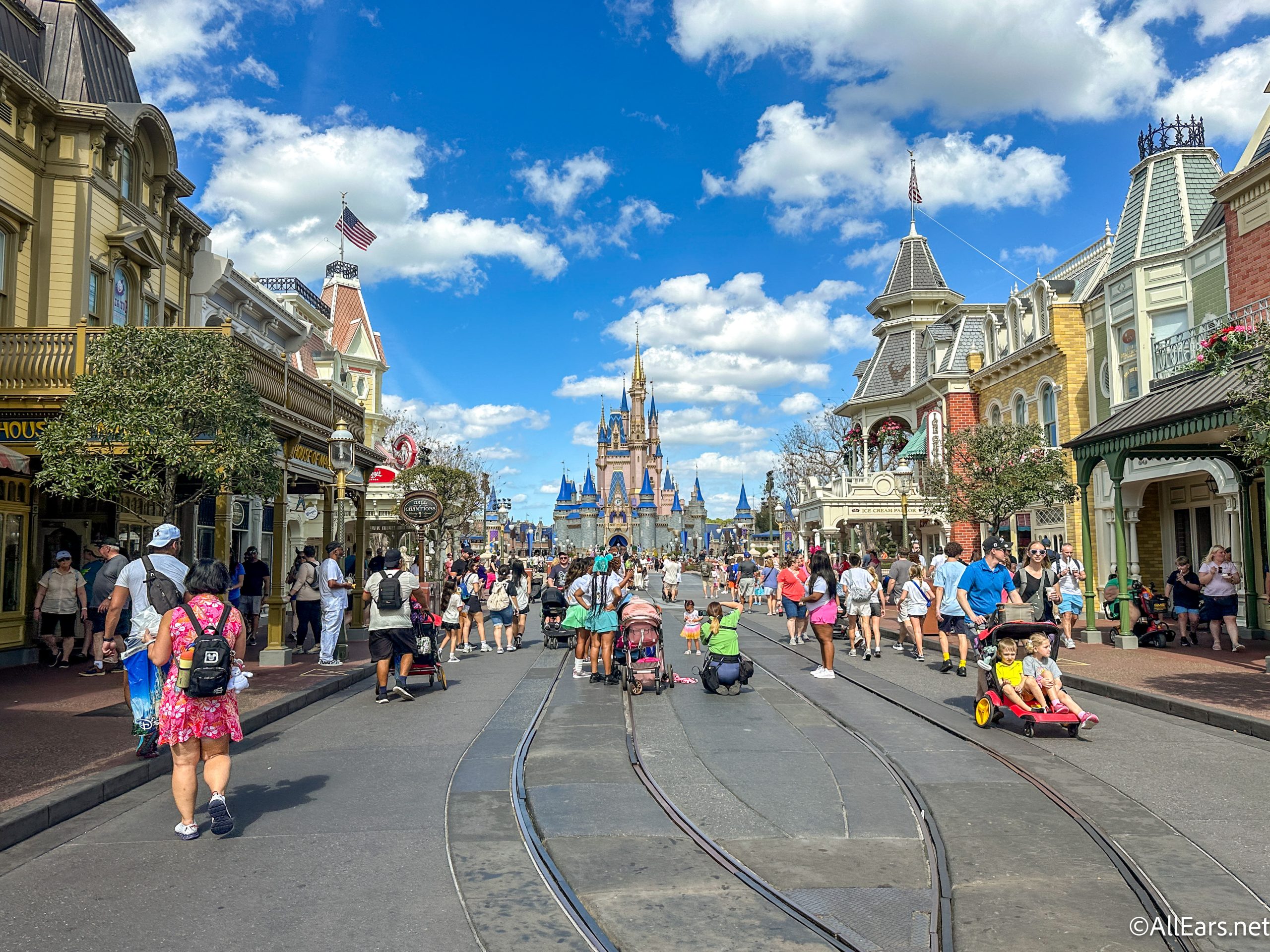





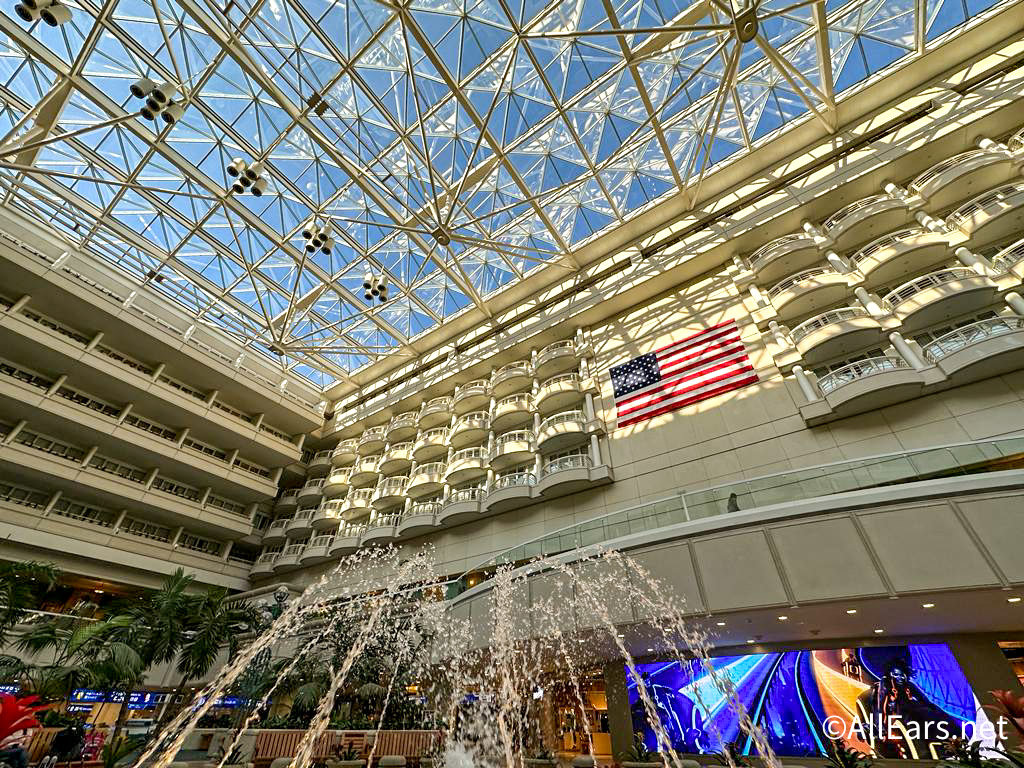






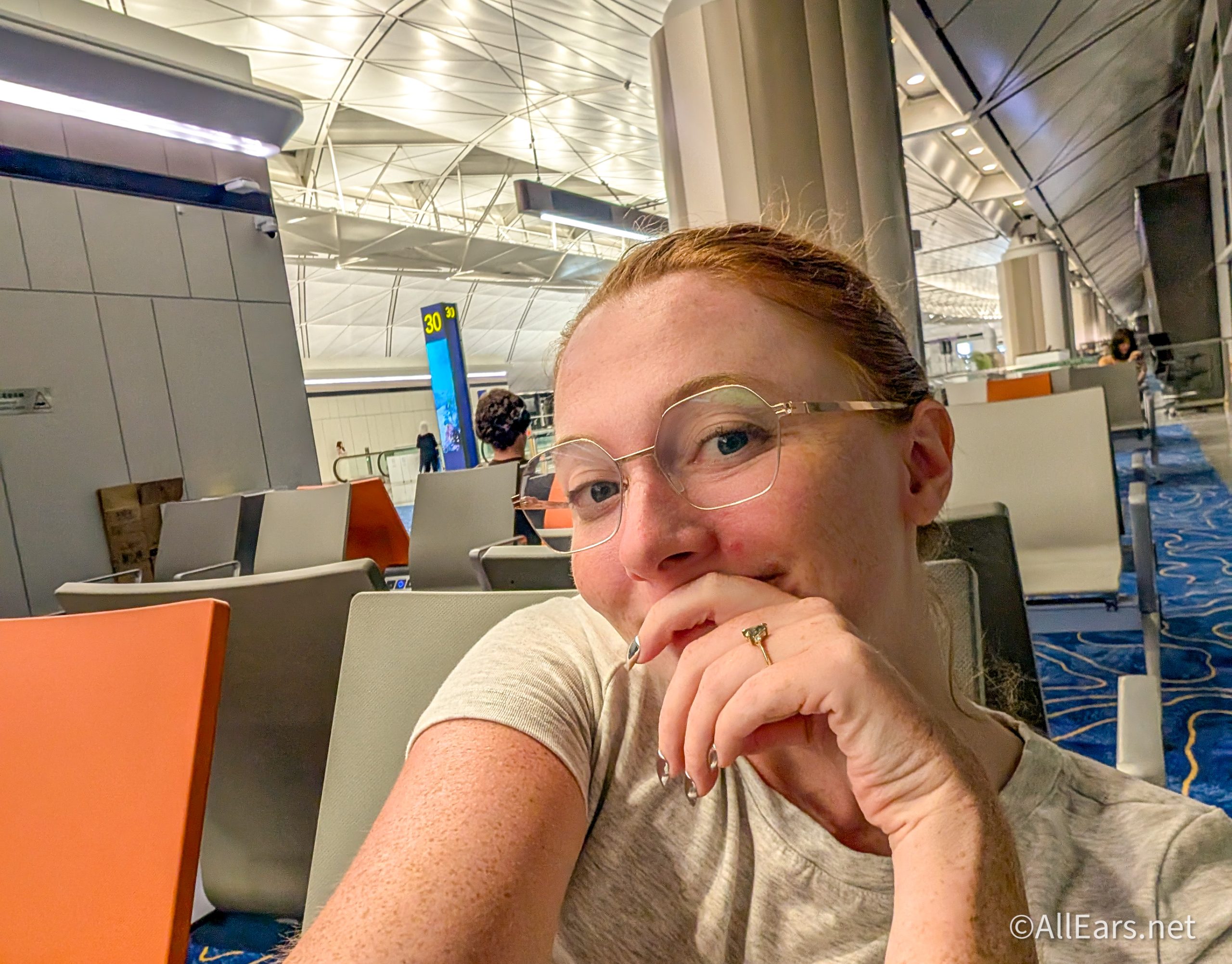



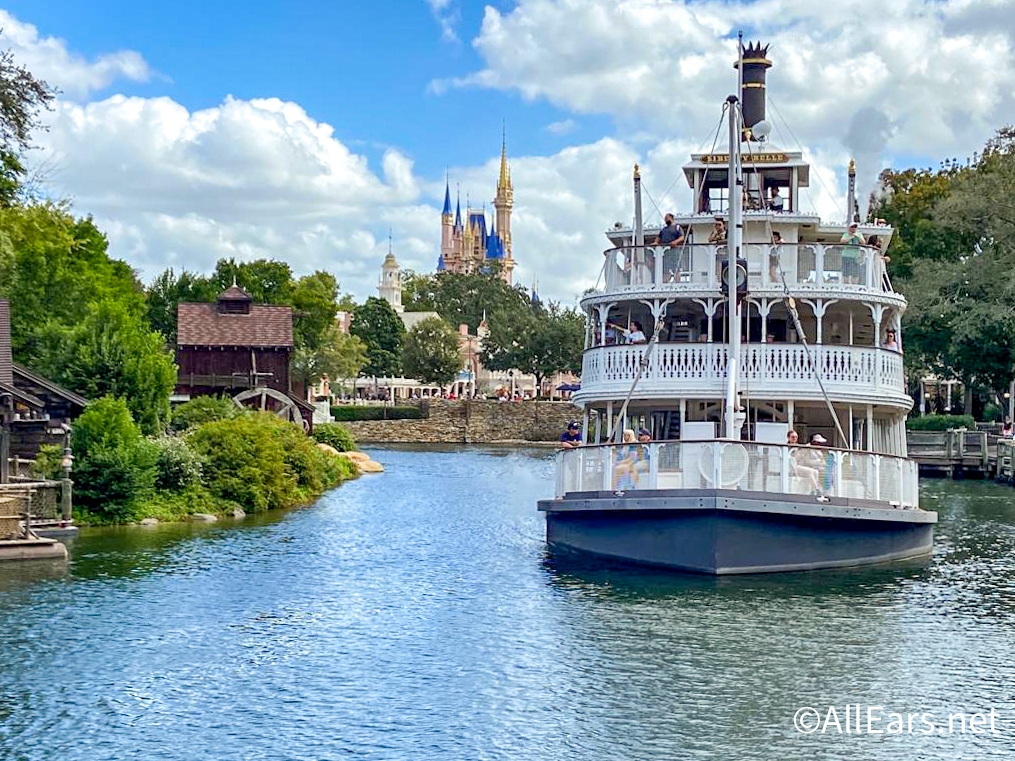

Trending Now
You won't catch me going to these three places in Magic Kingdom and here's 2...
August 29th is going to be a HUGE day at Disney World!
Is JetBlue cutting routes to Florida?
We've heard great things about Disney's Polynesian Village Resort and had great stays there ourselves,...
This is the water bottle that every Disney adult will be bringing to EPCOT for...
We will see 10 items at EPCOT's International Food and Wine Festival get a price...
Some of our favorite items for home and travel are on sale right now through...
Thinking about applying for TSA PreCheck? Make sure to keep these five things in mind.
Check out all the new nonstop flights to Orlando that were added this month!
We found the perfect bags for Magic Kingdom as we enter spooky season!
Disney just gave us a sneak peek at the prize for one of their seasonal...
This Disney California Adventure spot is fantastic for taking a reprieve from the craziness of...
A new gift card just dropped at Target in time for your next vacation!
Here's how you can become a Screamer of the Day at Disneyland!
I use TSA PreCheck when I travel, and here's why it makes my days SO...
There's a new limited time cake slice at The Cake Bake Shop that we think...
Act fast to get this bag in time for fall!
Let's check out the 2025 EPCOT Food & Wine Festival scavenger hunt, Remy's Ratatouille Hide...
Saying goodbye to the Rivers of America in Magic Kingdom has been difficult. The sadness...
Make sure you don't lose your MagicBand+!